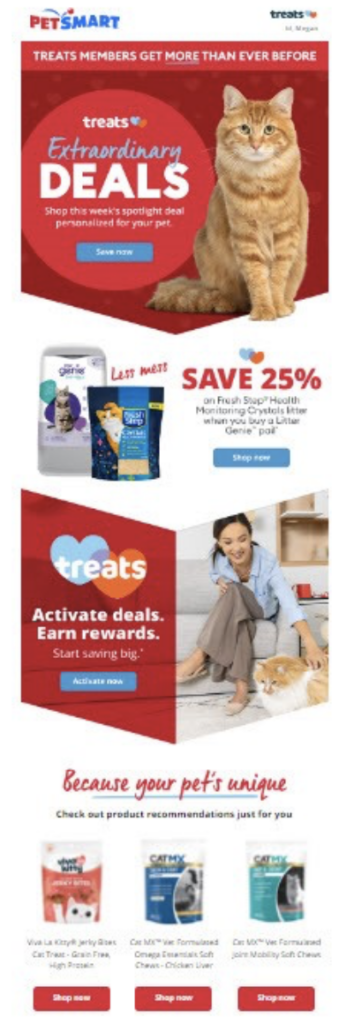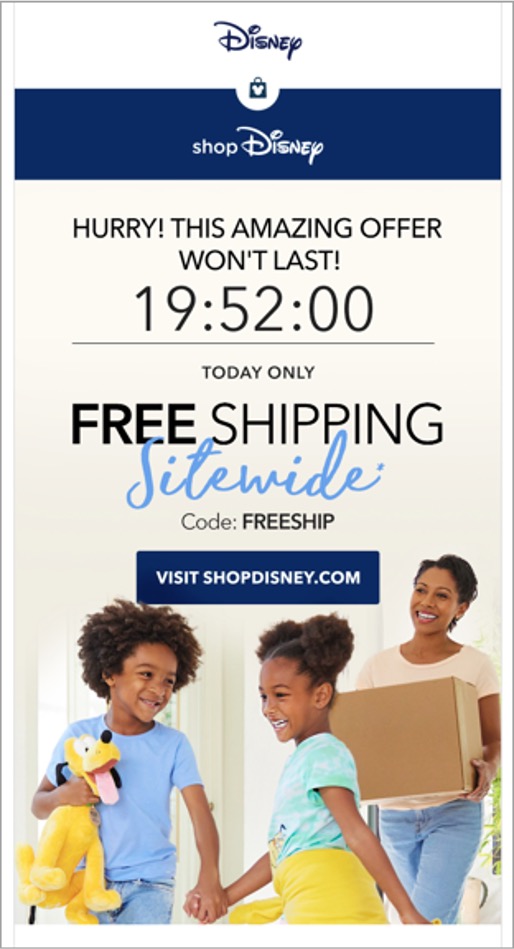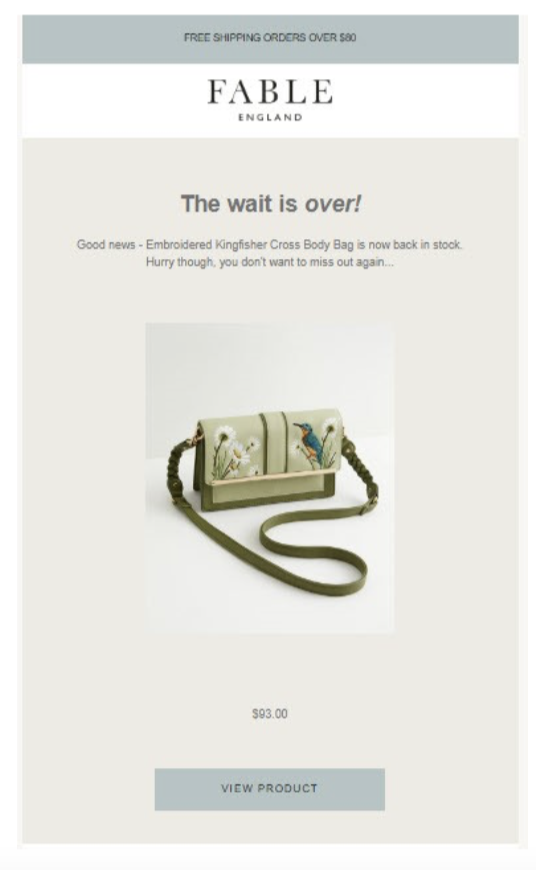
Ultimate Guide to Holiday Email Marketing
The holidays are characterized by festivities, happiness, and lots of shopping. While U.S. shoppers spent $221.8 billion online in 2023, this upcoming holiday season is set to break the record—online sales are expected to reach $240.8 billion. Most marketers know Q4 is the season they’re told to send more emails. The final months of the year are a critical time for email marketers and retailers alike—and brands rely heavily on the email channel to drive sales revenue during this peak period.
But beyond being a time of spending, people also seek meaningful experiences during this period—and the holidays are ideal for boosting customer engagement. Regular holiday email campaigns can ensure that brands facilitate deeper connections with customers and stay top of mind amidst the festive clutter. Plus, most people anticipate businesses having some offer, whether for Thanksgiving or Cyber Monday. In this way, holiday marketing emails are great for reactivating cold leads.
With strategically planned holiday email campaigns leveraging personalized deals, such as free shipping and discounts, businesses can connect more deeply with customers and stay at the forefront of shoppers’ minds—even during the chaos of the holidays.
However, relying on discounts and increasing sending volume doesn’t always increase revenue and engagement. Marketers need a more effective plan. Our holiday email marketing guide teaches you how to craft an effective strategy.
Promoting holiday sales early
This year, planning ahead is especially important, as periods of persistent inflation and ongoing economic instability influence consumers’ purchasing decisions.
Customers are still highly price-sensitive—data shows that strong discounts of as high as 30 percent are particularly enticing and will contribute toward the expected spend this season. Yet, with events such as Black Friday come a saturated advertising space and high competition. By launching your holiday sales early, you can beat the rush and get your foot in the door before your customers experience ad fatigue.
People also make purchases much sooner in the year. Just think about Amazon throwing in another Prime Day in October, which was perfect for people who wanted to get their shopping done early. We’ll likely see other retailers starting even earlier to try to compete. Promoting your campaigns ahead of time can allow you to get into your customers’ inboxes before your competition.
Early preparation also enables you to build a well-thought-out email marketing strategy that drives results. Starting weeks or months in advance, you can outline important dates and plan your communications, promotions, and announcements accordingly. You’ll also be able to preschedule emails and finalize content and design beforehand.
Crafting an effective holiday email strategy
To simplify your planning, here are some holiday email best practices to consider when developing a strategy.
Goal setting
Outline your goals before the season begins. With a good idea of the results you want to achieve, you can build a highly targeted campaign.
After you have identified your overarching purpose, create SMART goals, which are:
- Specific
- Measurable
- Achievable
- Relevant
- Time-bound
For example, some email marketers may wish to increase their click-through rate by 15 percent, whereas others may aim for 20 percent of subscribers to purchase a product using a holiday discount. Each campaign is unique—set goals that make sense for your business. With specific and measurable goals, you can craft a strategy around meeting these targets.
Segmentation strategies
Marketers should begin to segment their sends into targeted campaigns before peak sales season to increase engagement early on and improve deliverability later.
Segmentation is the process of dividing your list of subscribers into specific groups using a set of defined attributes. These attributes can include zero-party and first-party data, such as:
- Demographics
- Geographics
- Customer personas
- Customer behavior
- Email activity
The goal of segmentation is to better target subscribers with relevant content. Today, 71 percent of consumers expect to receive content related to their needs or wants. As a result, segmentation is tied to major lifts in subscriber engagement, with segmented marketing campaigns driving 30 percent more opens and 50 percent more click-throughs than non-segmented campaigns.
In addition to higher engagement rates, brands using segmentation strategies can also increase their revenue—76 percent of consumers will likely buy from a brand that targets them specifically.
See how PetSmart focuses its segmentation based on sending product information only for the type of pet the subscriber has. This way, a cat owner isn’t bombarded with dog products, and vice versa.
Personalization
Once you have segmented your subscriber list, personalize your holiday email marketing content to ensure it resonates with each segment.
Competition for subscriber attention in the inbox has never been fiercer, with most marketers sending between two and three emails daily. In response to this flood of messages, subscribers will become more selective when deciding which emails to open and engage with. They’ll also have a lower tolerance for emails that aren’t timely or relevant—either marking these messages as spam or ignoring them completely.
Marketers only have a short time to capture subscribers’ attention, too. According to a study by Microsoft, the human attention span has reduced from 12 to 8 seconds in the last 22 years. Subscribers scanning through crowded inboxes make split-second decisions about which messages they open. To gain subscriber attention and remain relevant throughout the peak sales season, senders need to optimize personalization capabilities. Here are two key elements to accomplish this:
1. Good personalization
Review existing customer data and capture any additional information that will help tailor message content during the holidays. Most marketers have increased their reliance on information provided directly by customers for targeting efforts since Apple introduced its Mail Privacy Protection (MPP), which prevents email senders from using tracking pixels to measure open rates and device usage.
This feature also masks recipients’ IP addresses to prevent location tracking. By using zero-party data instead—information customers knowingly and willingly share with a brand—marketers can gain the information necessary to create personalized campaigns.
One great avenue to capture this information is a preference center where subscribers can indicate their choices about the emails they want to receive. Promote your preference center in every email, and try sending dedicated emails that prompt subscribers to update their preferences ahead of the peak season.
2. Dynamic content
Dynamic content allows senders to personalize blocks of content within an email to create a customized subscriber experience at the moment the email is opened. Information used to inform dynamic content personalization can include historical data, customer behavior, and subscriber preferences.
Some customers only purchase from brands during the holidays each year—dig into year-over-year purchase data and use dynamic content to send tailored product features to these seasonal shoppers and increase their likelihood of re-engaging. You can also convert shoppers who are browsing but not yet buying by tapping into their browse abandonment behavior to populate a personalized product selection within an email.
Dynamic content is also a highly effective way to communicate time-sensitive deadlines, including promotion cutoffs and shipping deadlines. This encourages early buying during the peak sale season and ensures customers receive purchases on time.
Let’s look at two examples of personalization in action. First, Southwest uses consumer data to send flight deals based on the subscriber’s home airport hub, making it easy to navigate and find personalized deals.

Up next, Disney uses dynamic content to feature a countdown timer that shows the subscriber how much time they have left to take advantage of a free shipping promotion.
Subject line crafting
Subject lines are paramount for increasing open rates and engagement. As a subject does all the heavy lifting to encourage a receiver to open an email, it is one of the most important aspects of a campaign. Plus, in order for marketers’ personalization efforts to have the desired outcome, subscribers need to read the content first.
Follow these tips to craft engaging subject lines that can help entice your customers:
- Get to the point: Clearly state the value of the email, whether that is a discount or free shipping.
- Use emojis: Using Emojis strategically is a fun way to spread holiday cheer and make your subject lines more noticeable—but using irrelevant characters or too many at once can look spammy.
- Create FOMO: For example, you can encourage recipients to open a holiday sale email by making them feel like they will miss out. Use words such as “final sale,” “last chance,” or “limited time” to create a sense of urgency—but avoid overuse.
- Personalize the subject line: Just as the content of your email should be relevant to each receiver, so should the subject line. Include the recipient’s name or specific details to make the email feel more personal.
- Incorporate segmentation: Your segmentation efforts come in handy here, too—target different audience segments with separate target lines based on their behavior and preferences.
- Steer clear of spam triggers: Though often considered obsolete, spam trigger words and phrases can cause email recipients to flag your messages as spam manually. Be cautious of writing words in all capital letters and using excessive exclamation points—beyond potentially getting flagged as spam, doing so can also make receivers feel like you are shouting at them.
- Use AI: More marketers are turning to AI to create hyper-relevant, one-on-one experiences between their brand and consumers. Such tools can help generate content ideas, including subject lines. Remember that any content created with AI should be reviewed and edited by a human to make sure it stays on brand and makes sense.
Here are some holiday email marketing examples of well-crafted subject lines:
- Gymshark’s subject line of “Time for some heavy gifting 🏋️♂️🎁” is a clever play on words that is both on brand and festive and lets the receiver know what the email is about.
- Brewbike’s “Pumpkin Is Coming 🎃⏳” subject line alerts receivers of a new product release related to fall and Halloween.
Visual content
The design elements marketers use can play a significant role in increasing conversions and helping guide decisions. Graphics can allow receivers to process information much faster. They are often more effective than written content at conveying emotion and encouraging action. Holiday-themed visual content is another excellent way to get receivers into a festive mood.
Keep these tips in mind to create beautifully designed emails:
- Use photos: Photos are a great way to stir emotions. What do you want receivers to feel? Use this to help you choose a suitable image.
- Strike a balance: Your design should enhance recipients’ overall understanding rather than distract them from the purpose of the email. Use white space, and guide your subscribers to the call to action (CTA) with graphics such as arrows.
Automation and optimization of holiday emails
With an effective email strategy, here’s how to use automation to save time, optimize your emails, and increase deliverability.
Automation
Email automation helps senders get the right message to the right customer at the right time, as subscriber actions trigger these messages. When done well, time-saving email automation strategies can help deliver tailored experiences and drive revenue.
Triggered campaigns, such as abandoned cart or back-in-stock messages, can be highly effective. These messages may be the push holiday bargain hunters need to make a purchase, as they may be browsing for the best discount or waiting to see if prices drop even lower. You can speed up the average time to conversion by sending email alerts when an item a shopper engaged with previously drops in price or is back in stock.
Also, home in on the cause of cart abandonment during the checkout process to then re-target those customers and message them accordingly. Do you see a pattern of shoppers bouncing due to shipping costs? Trigger an exclusive promo code for free shipping.
For example, Fable England sends a Back in Stock email to let subscribers know when the item they want is available again. They also use the language “Hurry though, you don’t want to miss out again…” to help create a sense of urgency.
Pro Tip: When setting up email automations, be mindful of sending to global audiences. Be aware of differences in seasons and holidays, and make sure to send at optimal times.
Mobile optimization
Ensure your content is mobile-friendly—receivers will likely open your emails on their tablets or smartphones. In fact, this season is expected to be the most mobile-oriented yet, with $128.1 billion spent using mobile devices.
Here’s how to optimize your emails for mobile:
- Keep subject lines short: Only use between 35-40 characters to ensure they are displayed fully.
- Encourage reading: Use a single-column design and implement a “less is more” motto when writing copy. This way, readers don’t have to scroll too much and can easily read the content of the email.
- Use a design previewer: Before you hit send, confirm that your design is mobile-responsive by using your email builder’s mobile preview mode. All elements should stack in a visually coherent way, and the font should resize so that it is legible.
Deliverability optimization
One in six emails never reach receivers’ inboxes. Deliverability issues can hinder your email program performance, and the road to recovery can be long and costly.
Before entering the holiday sales season, every marketer needs to monitor campaign deliverability before peak sales season begins.
Everest, Validity’s email deliverability platform, can provide this crucial insight and deliverability guidance to inform your peak sales strategy.
Preparing your email campaigns for the holiday season
Other deliverability risk factors include sender reputation, list hygiene, and critical blocklists. Marketers should consider these as the finishing touches on their holiday preparations.
Clean up your email list
Before you start trying to open up your segments to reach more people during the peak season, take som e time to review and cleanse your list. Run your list through a validation tool such as Validity BriteVerify to make sure the data is still accurate.
If you have older Gmail addresses, now is the time to completely suppress them. Since December 1, 2023, Gmail has been deleting accounts that have not been used or logged into in the last two years.
Once you’ve gathered and cleaned customer data, it’s important to honor subscribers’ choices and follow through by delivering what they’ve requested.
Warm up your IP and domain
During peak sales season, many senders increase send volume and frequency, often dramatically and suddenly. These sudden, significant changes are alarm signals for mailbox providers, who may block or bulk messages until they are able to validate a sender’s reputation. Senders can easily avoid negative repercussions such as delivery delays or spam placement by warming up their IPs or domains in advance.
During an IP or domain warmup, gradually increase your message volume to the receiving mailbox provider. As you slowly increase your sending volume, you can build a meaningful reputation as a sender with mailbox providers. As we know, sender reputation is a key driver of mailbox provider filtering decisions. It can determine whether messages land in the inbox, go to the spam folder, or are rejected.
Our Sender Certification program can keep your emails out of the spam folder and in the inbox where they belong. Validity partners with many mailbox providers to ensure that our Certified senders see a significant lift in their deliverability.
In addition, repeatedly blasting out messages across your list can expedite subscriber fatigue. Early disengagement can result in lost opportunities for a customer to purchase from your brand. Brands don’t want to overwhelm and annoy customers before a peak purchase period. When increasing volume, start with a solid segment of customers who expect your messages and actively engage with your brand.
Remember to validate email addresses on your list before beginning a warmup using a contact verification solution like BriteVerify®. Removing invalid or risky email addresses, especially for segments with low or no engagement, can prevent list hygiene issues from disrupting your deliverability.
Maximize your campaign performance with Validity
For a successful email marketing holiday season, explore BriteVerify, Everest, and Sender Certification to help drive campaign results. Accurate data that lets you target customers more effectively will empower you to boost email engagement and sales productivity.
Tens of thousands of organizations trust Validity to increase customer engagement and manage their data. We pride ourselves on helping our clients make better decisions that generate leads and drive sales, and we’d love to help you, too. To learn more about our solutions, contact us today!






